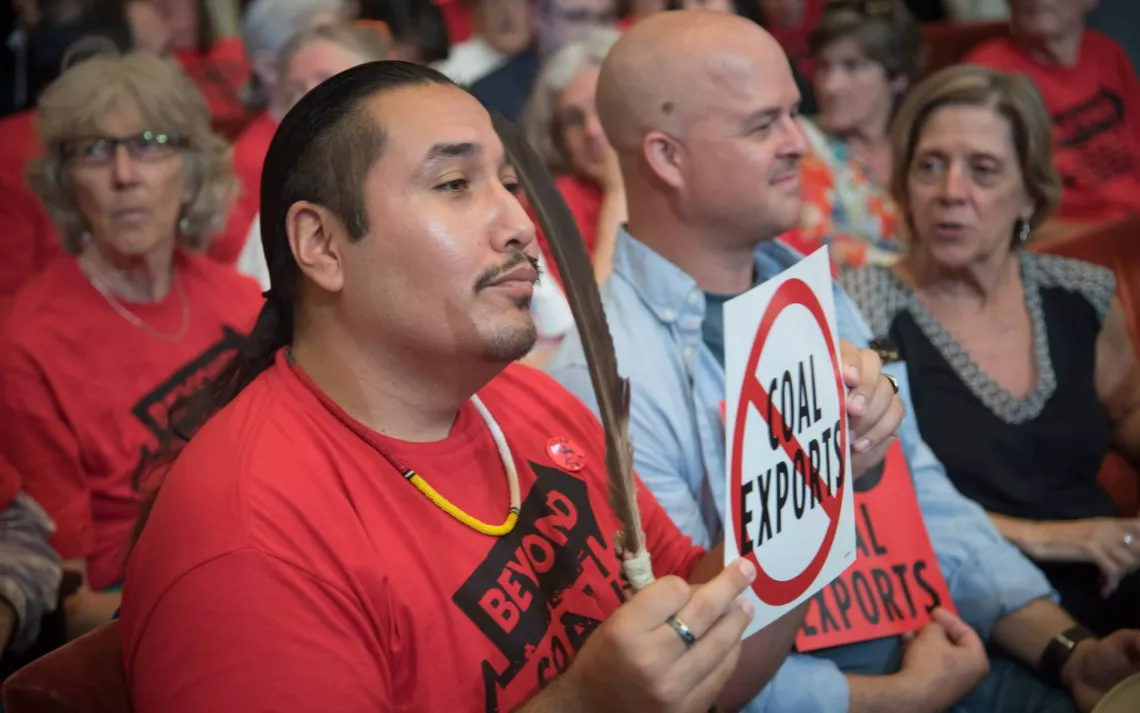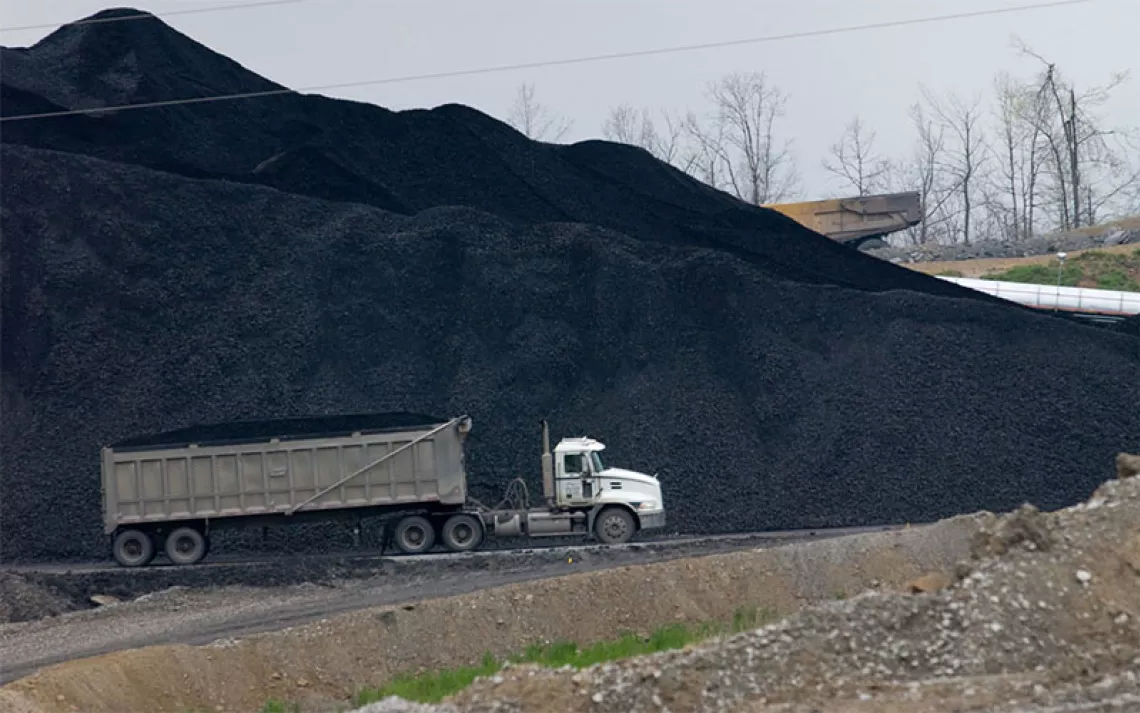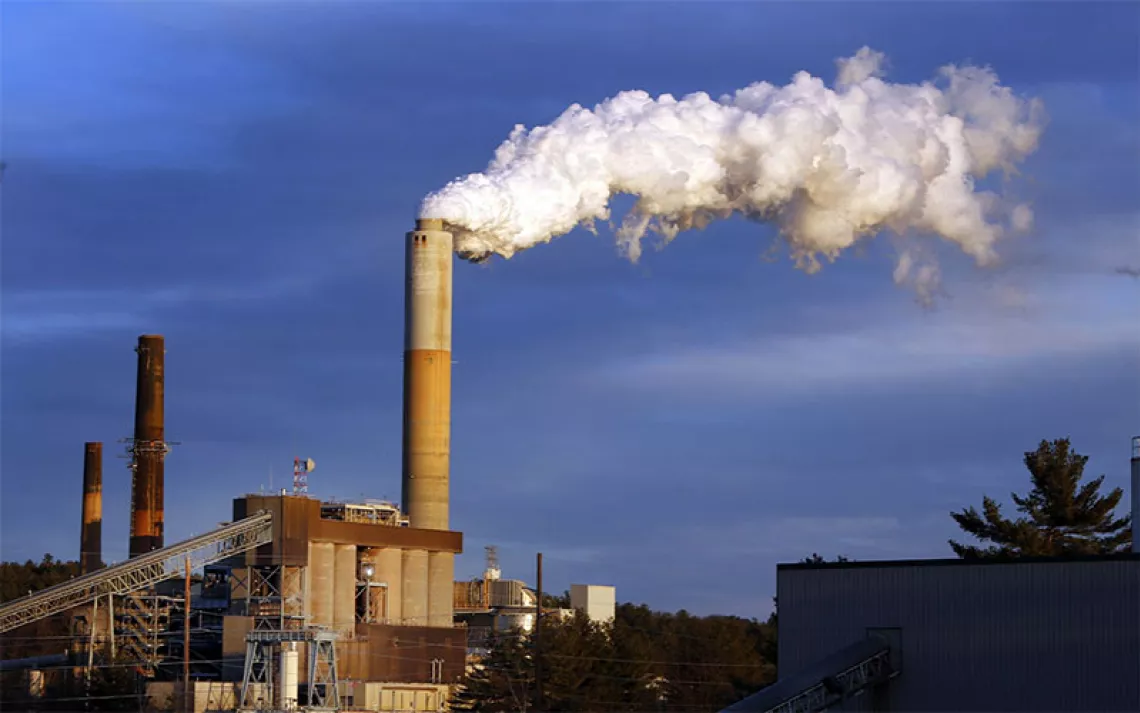Big Coal Comes to Oakland

Over 450 people turned out to say "No coal in Oakland" at a public hearing in September. | Photo by Brooke Anderson Photography
In 2012, the city of Oakland finalized plans with private developer Prologis CCIG Oakland Global, LLC to build a new export terminal on the Oakland waterfront. Original documents for the project outlined designs for a terminal built to accommodate and ship oversize bulk products, such as windmills, auto parts, and grains. At the time, no one thought that the bulk product might be coal.
Yet, on December 8, a decision by the Oakland City Council might set the city on a path to become home to the largest coal export terminal on the West Coast.
Four coal-producing counties in Utah have offered $53 million of public money to dedicate the terminal to the exclusive export of coal. If the City Council doesn’t take action against the deal, 9 million tons of coal will pass through Oakland each year to be shipped overseas. The new terminal, which is set for completion in 2017, will reside underneath the Bay Bridge toll plaza on the grounds of the old Oakland Army Base (now city-owned).
“They want to take over what will be a brand new, state-of-the-art gigantic facility of 350 acres to house and ship 9 million tons of coal per year,” explains Michael Kaufman, a leader in the anti-coal campaign ‘No Coal in Oakland.’ “That’s much more coal than is handled at the Stockton and Richmond terminals combined."
Kaufman is part of a growing grassroots movement of local residents, activists, lawyers, environmentalists, and union lobbyists who have been fighting to block the coal deal for the past six months. Opponents of the deal argue that transporting what amounts to over 24 thousand tons of coal per day through the I-80 corridor to the Oakland Marina will have serious health, environmental, and economic implications for Bay Area residents.
"The progressive policy statements that California has made about wanting to reduce its greenhouse gas footprint will be counteracted by the pollution and greenhouse gases that the exported coal will emit when it is burned overseas," explains Irene Gutierrez, an attorney at the nonprofit environmental law organization Earthjustice.
Gutierrez adds that, although prior environmental reviews have been conducted for the redevelopment property where the terminal will reside, none of the reviews have looked at the impact that exporting coal might have.
The coal deal will also take away from environmental, social, and economic rehabilitation in Utah communities negatively effected by the mining industry. The $53 million offered to fund the project in Oakland is from The Utah Permanent Community Impact Fund Board, a state program originally established to provide grants and loans to help mitigate the impact of extraction and mineral resource development.
“These public funds are now being promised to facilitate extraction and out-of-state development,” says Kaufman. “We think this is a violation of that money’s intended purpose."
There's also the issue of toxic coal dust, which is linked to health problems, including asthma, childhood bronchitis, pneumonia, and heart disease. Residents and port workers who are exposed to coal for extended periods of time would likely experience higher health risks.

Make every day an Earth Day
Get articles like this one sent directly to your inbox.
With this action you affirm you want to receive Sierra Club communications and may vote on policy designated by the Sierra Club Board.
"If you look at the route on which the coal would be coming through Oakland,” explains environmental and labor activist Brooke Anderson, “it goes through many working class neighborhoods and communities of color that are already overburdened by pollution.” Anderson is a staff person with Climate Workers, a local initiative of the Movement Generation Justice and Ecology Project aimed at building a worker-led, grassroots labor movement for climate justice.
“We know that one out of five children between the ages of 0 and 5 are admitted to emergency hospitals for treatment of respiratory problems that end up being identified as asthma,” adds Margaret Gordon, Co-Director of West Oakland Environmental Indicators Project. According to Gordon, coal will exacerbate respiratory problems for West Oakland residents who already suffer from pollution emitted by Bay Bridge traffic and the pre-existing Port of Oakland.
Even if the Oakland City Council ignores the environmental and health risks, anti-coal advocates hope that basic economics will sway the council. "Coal is actually a very risky investment for Oakland,” says Anderson. “As the environmental movement grows and climate disasters hit our communities with increasing frequency, more countries are going to make decisions to phase out of coal, and it’s going to become a stranded asset.”
Although a resolution is scheduled for December 8, Oakland’s City Council may decide to push back the deadline.
Hundreds of organizations and over a dozen labor unions have already joined the fight against coal in Oakland. The seven organizations officially allied with No Coal in Oakland include the Sierra Club Bay Chapter, Communities for Better Environment, the Asian Pacific Environmental Network, Green Action, the Sunflower Alliance, the West Oakland Environmental Indicators Project, 350 Bay Area, California Interfaith Power & Light, and San Francisco Baykeeper.
"We can't stop the coal from rolling through on the rail lines, but the City Council does have the power to determine that coal is a health and safety danger to the residents near the port, to the workers on the port, and to Oakland in general,” said Kaufman. “If the City Council decides to block the deal, we might have a chance at keeping the coal in the ground.”
 The Magazine of The Sierra Club
The Magazine of The Sierra Club



